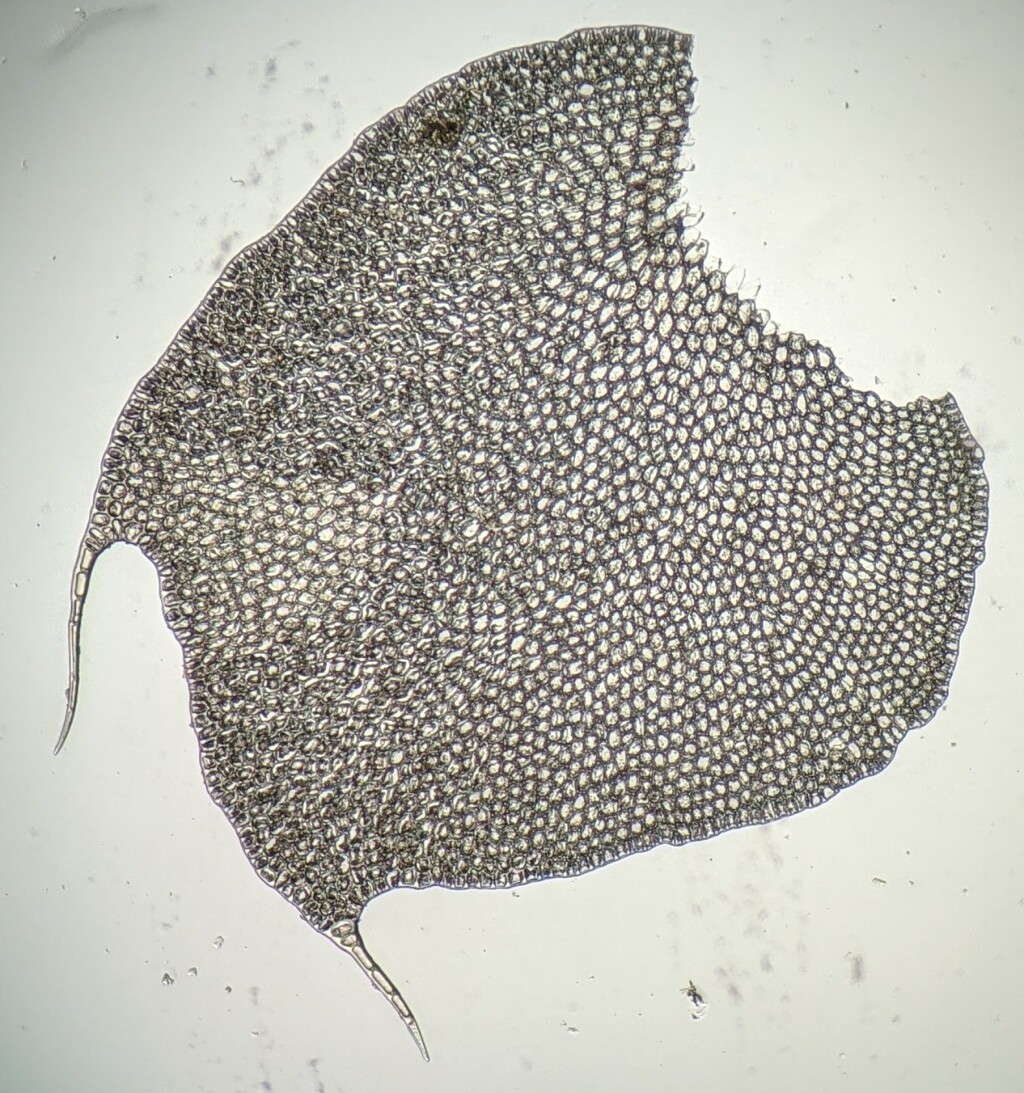Pseudomarsupidium
HerzogLithophytic, terrestrial (not in Victoria) or epiphytic, dioicous. Asexual reproduction absent. Stems differentiated into leafless creeping axes and erect unbranched or sparingly branched leafy axes; branches emerging from main stems near lateral leaf or from ventral side of stem and with a collar of tissue at base. Lateral leaves orbicular, reniform, or broadly ovate, asymmetric, unlobed, succubous, vertically oriented and sometimes secund in direction of abaxial stem or erect-spreading to widely spreading perpendicular to the stem, alternate, remote (not in Victoria) to imbricate, entire (not in Victoria), dentate (not in Victoria) or biciliate, sometimes with smaller additional cilia (not in Victoria), incurved along basiscopic margin or plane. Underleaves absent. Leaf cells polygonal, mostly hexagonal and isodiametric, also oblong to irregular along margin, not becoming distinctly more elongated toward base, smooth, thin-walled, becoming thicker walled at margin, with distinct nodose trigones, with 4–11 oil bodies; oil bodies spherical, obloid or ovoid, granular-botryoidal, colourless. Rhizoids sparse and confined to creeping leafless stems. Androecia forming short branches arising from near leafy stem bases or from leafless creeping stems, with 1–6 pairs of ventricose bracts, each with a single antheridium. Sporophytes terminating short branches without normal leaves arising from near leafy stem bases or from leafless creeping stems, developing within bracts, a perianth and a shoot calyptra; bracts unlobed or 2–3-lobed; shoot calyptra green, fleshy, becoming enlarged and clavate in the absence of a well-developed perianth; perianth vestigial and deeply incised, sometimes to near base into bract-like segments or well-developed and ovoid, trigonous and with dentate or lobulate and ciliate mouth; capsule ellipsoid, 3–7-stratose; elaters bispiral; spores verruculose.
Four species, one in Borneo, one endemic to Venezuala, one widespread in Britain, Ireland, France, the northern Andes, Macaronesia and southern to central Africa, and one species, P. piliferum (Steph.) Herzog ex Grolle, in southern South America, Juan Fernandez, New Zealand, New Caledonia and south-east Australia (Schuster 2002; Söderström et al. 2016).
This genus has alternatively been treated as Adelanthus (Grolle 1972; Schuster 2002). See Adelanthus profile.
Grolle, R. (1972). Zur kenntnis von Adelanthus Mitt. Journal of the Hattori Botanical Laboratory 35: 325–370.
Schuster, R.M. (2002). Austral Hepaticae Part II. Nova Hedwigia Beiheft 119. Cramer in der Gebrüder Borntraeger Verlagsbuchbehandlung: Berling & Stuttgart.
Söderström, L., Hagborg, A., von Konrat, M., Bartholomew-Began, S., Bell, D., Briscoe, L., Brown, E., Cargill, D.C., Costa, D.P., Crandall-Stotler, B.J., Cooper, E.D., Dauphin, G., Engel, J.J., Feldberg, K., Glenny, D., Gradstein, S.R., He, X., Heinrichs, J., Hentschel, J., Ilkiu-Borges, A.L., Katagiri, T., Konstantinova, N.A., Larraín, J., Long, D.G., Nebel, M., Pócs, T., Puche, F., Reiner-Drehwald, E., Renner, M.A.M., Sass-Gyarmati, A., Schäfer-Verwimp, A., Moragues, J.S., Stotler, R.E., Sukkharak, P., Thiers, B.M., Uribe, J., Váňa, J., Villarreal, J.C., Wigginton, M., Zhang, L. & Zhu, R. (2016). World checklist of hornworts and liverworts. Phytokeys 59: 1–828.
 Spinning
Spinning